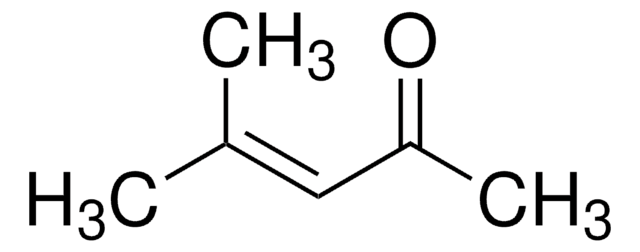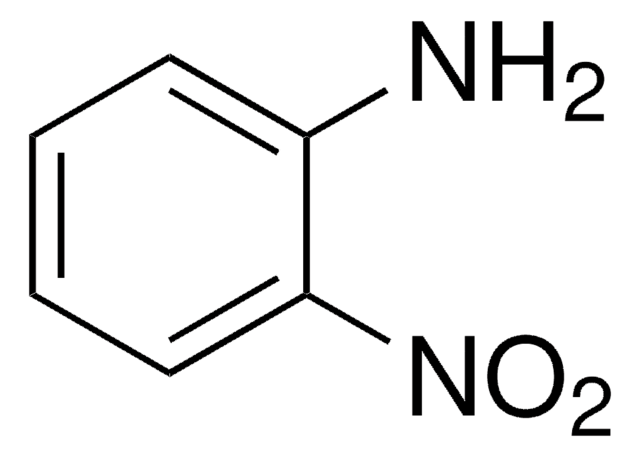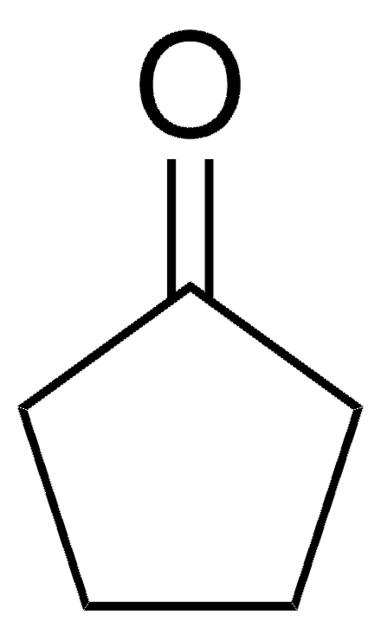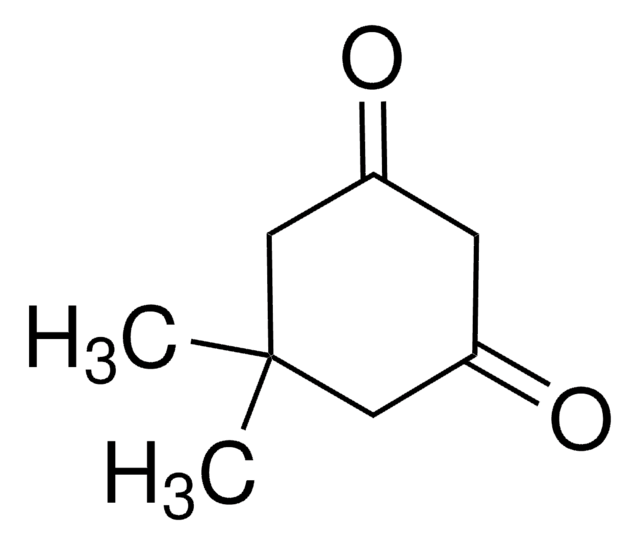8.05791
Mesityl oxide
for synthesis
Synonym(e):
Mesityl oxide, Isopropylideneacetone, 4-Methyl-3-penten-2-one
About This Item
Empfohlene Produkte
Dampfdruck
10.5 hPa ( 20 °C)
Qualitätsniveau
Form
liquid
Selbstzündungstemp.
344 °C
Wirksamkeit
1120 mg/kg LD50, oral (Rat)
5150 mg/kg LD50, skin (Rabbit)
Expl.-Gr.
1.4-10.1 % (v/v)
bp
130 °C/1013 hPa
mp (Schmelzpunkt)
-59 °C
Übergangstemp.
flash point 28 °C
Dichte
0.85 g/cm3 at 20 °C
Lagertemp.
2-30°C
InChI
1S/C6H10O/c1-5(2)4-6(3)7/h4H,1-3H3
InChIKey
SHOJXDKTYKFBRD-UHFFFAOYSA-N
Anwendung
- Nanomaterial synthesis: Mesityl oxide is employed in the chemical reactivity studies of the tryptophan/acetone/DMSO triad system, highlighting its potential applications in the innovative synthesis of nanomaterials, advancing green chemistry initiatives (Huang et al., 2023).
- Electrode modification for residue detection: Utilized in the detection of residual 2-Phenylphenol on lemon rind, mesityl oxide served as a solvent in the electrochemical deposition of polymeric stackings, illustrating its utility in enhancing analytical methods in food safety (Kiss et al., 2022).
- Organic sensing media: Mesityl oxide was a key solvent in the anodic polymerization process for sensing phenols, indicating its effective use in the development of sensing layers for environmental monitoring (Kiss et al., 2022).
- Pharmaceutical product quality control: Mesityl oxide is instrumental in the determination of acetone and related impurities in drug product intermediates, showing its critical role in ensuring pharmaceutical quality and compliance (Quirk et al., 2014).
Hinweis zur Analyse
a-Mesityloxid (GC, Fl.%): ≥ 85.0 % (a/a)
Dichte (d 20 °C/ 4 °C): 0.853 - 0.856
Identität (IR): entspricht
Signalwort
Danger
Gefahreneinstufungen
Acute Tox. 3 Inhalation - Acute Tox. 4 Dermal - Acute Tox. 4 Oral - Eye Irrit. 2 - Flam. Liq. 3 - Skin Irrit. 2 - STOT SE 3
Zielorgane
Respiratory system
Lagerklassenschlüssel
3 - Flammable liquids
WGK
WGK 1
Flammpunkt (°F)
87.8 °F - closed cup
Flammpunkt (°C)
31 °C - closed cup
Analysenzertifikate (COA)
Suchen Sie nach Analysenzertifikate (COA), indem Sie die Lot-/Chargennummer des Produkts eingeben. Lot- und Chargennummern sind auf dem Produktetikett hinter den Wörtern ‘Lot’ oder ‘Batch’ (Lot oder Charge) zu finden.
Besitzen Sie dieses Produkt bereits?
In der Dokumentenbibliothek finden Sie die Dokumentation zu den Produkten, die Sie kürzlich erworben haben.
Kunden haben sich ebenfalls angesehen
Unser Team von Wissenschaftlern verfügt über Erfahrung in allen Forschungsbereichen einschließlich Life Science, Materialwissenschaften, chemischer Synthese, Chromatographie, Analytik und vielen mehr..
Setzen Sie sich mit dem technischen Dienst in Verbindung.












